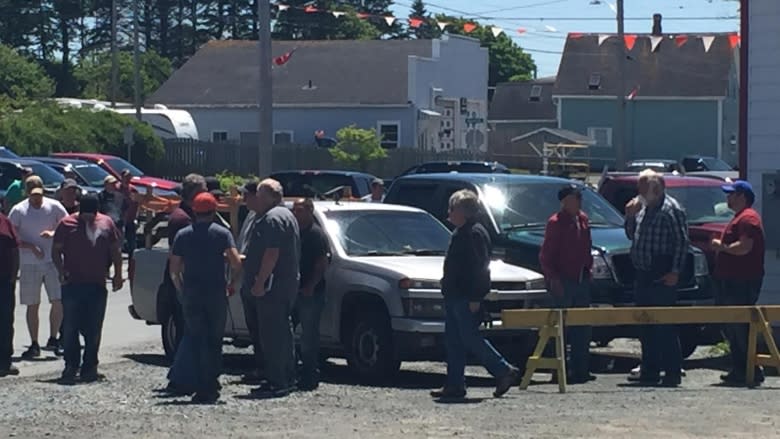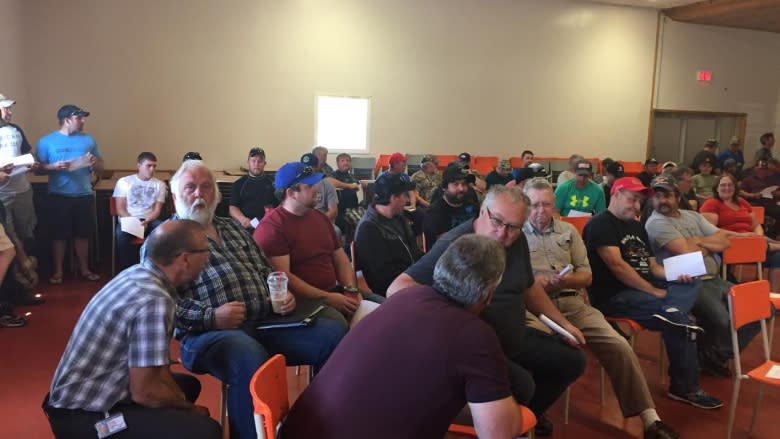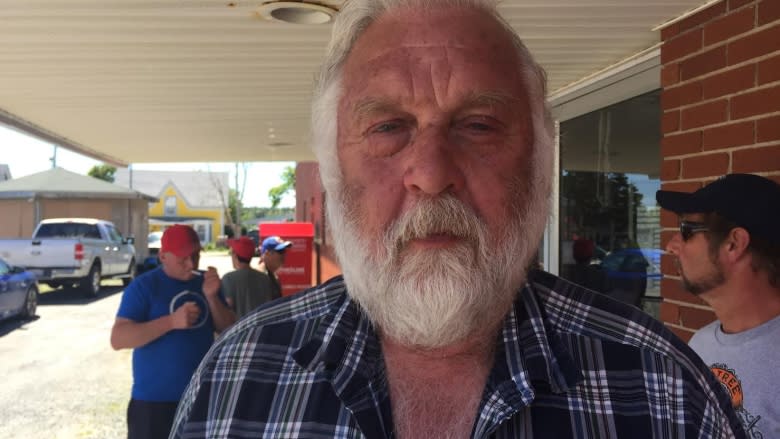Nova Scotia lobster fishermen reject idea of surveillance cameras on boats
The global demand by consumers that seafood be harvested sustainably made its way into a firehall in Lockeport Thursday.
More than a hundred fishermen from southwest Nova Scotia showed up at an information session on the use of video cameras on fishing boats to monitor catch. The session was hosted by the Department of Fisheries and Oceans and organized by the Ecology Action Centre.
A fisherman from British Columbia and a program manager from the Gulf of Maine Research Institute both spoke about the use of camera monitoring in those regions.
Cusk and cod bycatch
At issue is the bycatch of endangered or threatened species. In Nova Scotia's lobster fishery, the Atlantic cod and cusk are among fish stocks to watch as they get trapped along with the crustaceans.
Many of the fishermen who attended the workshop were upset about the perceived need for cameras, and suspicious about an invasion of privacy.
Wilford Smith, from Port La Tour, asked why cameras are necessary when local fishermen are already self-reporting bycatch — which they throw back — in logbooks that list species at risk.
"What for? We've got nothing to hide.... We're not keeping nothing secret," said Smith.
Some fishermen said they even move their gear if bycatch becomes an issue.
Lobster fishery is eco-certified
Big buyers of lobster — the main markets are the United States, Europe and Asia — want proof their product is sustainably caught. The Nova Scotia lobster fishery became eco-certified under the Marine Stewardship Council in 2015 to meet that demand.
Susanna Fuller, senior marine co-ordinator at the Ecology Action Centre, said cameras aren't being imposed on lobster fishermen, but she noted there aren't a lot of options. Alternatives such as at-sea observers are even more expensive, she said.
About 20 younger fishermen from Nova Scotia's district 33 requested the workshop. The nearly 1,700 licence holders from that area and district 34, which stretches from Digby to Halifax, harvest the most lobster in Atlantic Canada.
Cameras mounted on the wheelhouse or rigging have been used for years to monitor B.C.'s crab and groundfish fishery. There's also a pilot project testing cameras in the tuna fishery off Nova Scotia and Prince Edward Island.
'Everybody's not a millionaire'
Fishermen at the meeting heard that buying a video camera can cost about $7,000. Plus, there's the additional cost of paying a company to review the footage, a fee that ranges anywhere from $10 for a simple check for endangered fish to $500 for a "cadillac service."
Kevin Ross, a captain, bemoaned the cost, saying "everybody's not a millionaire in this industry." He said cameras would be yet another cost borne by fishermen on top of expenses that include operating and maintaining boats to paying crew.
He also spoke up when CBC News was told not to video record a discussion about video cameras on boats.
Questions about 'hidden agenda'
Smith questioned the inconvenience and reliability of using cameras during the rough conditions of their winter and spring lobster season.
"They don't know what we go through, blowing 25 to 30, and spray coming over, I mean they don't understand," said Smith.
He questioned whether there's a "hidden agenda" at play.
"What information do they want out of cameras is the question fishermen are asking," said Smith.
Fuller acknowledged there's a "hard road" ahead to develop trust between fishermen and the DFO — trust that's required in order to move forward on marine stewardship.
She said while there is no current requirement to use cameras, a national catch monitoring policy is in the works and "we wanted fishermen to be ready and proactive."





